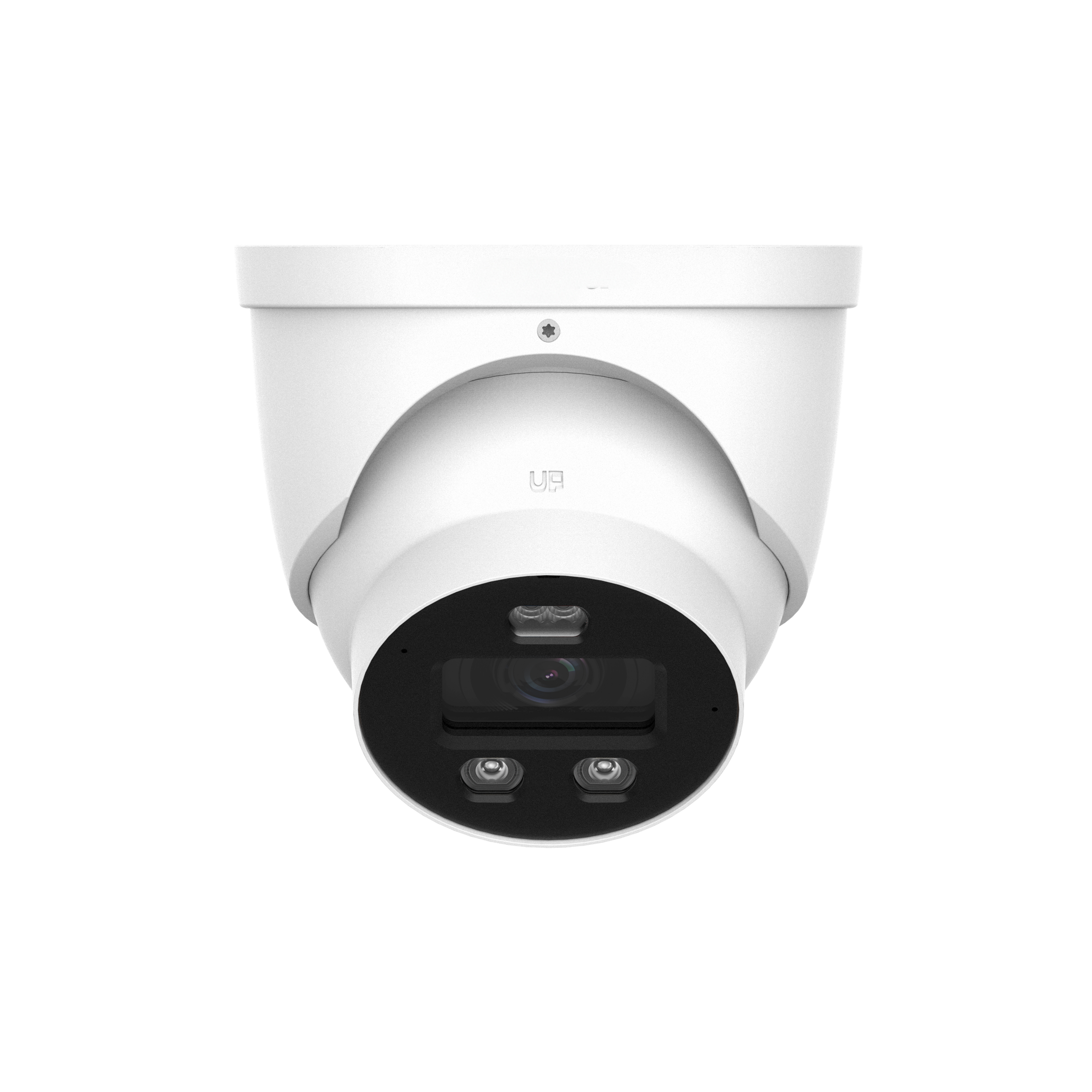And before it is asked LOL....
So some people say "Hey I will just downrez the 8MP camera to a 4MP camera" and nope, downrezing a camera does not work - It is still using the 8 million pixels - the camera doesn't change the "pixel resolution screen" on the camera when you go from 8MP to 4MP. The sensor still needs 2 times the light going from 8MP to 4MP, so the native 4MP camera will result in a better image at night. The firmware will make some algorithm attempt at downrezing it, but it could be a complete crap image or a somewhat usable image, but if there is a concern that the 8MP isn't performing or wouldn't perform well at night, then it is better to go with the 4MP.
This is from the Dahua 49225 (2MP on 1/2.8" sensor) versus 49425 (4MP on the same 1/2.8" sensor)
The 49225 is a 2MP PTZ on the 1/2.8" sensor. It deems it has enough light at a 1/60 shutter so it stays in color:
Here is the 49425, which is the same camera as the 49225 except is a 4MP on the same 1/2.8" sensor as the 49225.
Here is the first big issue you see with a double the resolution on the same size sensor - It deems that it does not have enough light at a 1/60 shutter so it goes to B/W with Infrared:
As you see above, I have a 4MP and 2MP on the same 1/2.8" sensor and the picture quality is quite different between the two and the 2MP kicks it's butt at night.
In most instances, you want to get a camera that will perform at your location for the worse situation, which for most of us is at night when it is dark and there is little to no light. If a camera performs at night, it is easier to tweak settings to make it work during the day than it is the other way around.
My 2MP cameras outperform my neighbors 4K (8MP) cameras....why....because they are both on the same size sensor.
When we had a thief come thru here and get into a lot of cars, the police couldn't use one video or photo from anyone's system but mine. Not even my other neighbors $1,300 8MP system provided useful info - the cams just didn't cut it at night.
My neighbor tried the "I will just downrez the 8MP to 2MP" and the image was a soft dark mess.
His system wasn't even a year old and after that event has started replacing with cameras based on my recommendation and seeing my results. He is still shocked a 2MP camera performs better than his 4k cameras and he cannot figure out why downrezing from 8MP to 2MP doesn't work properly... It is all about the amount of light needed and getting the right camera for the right location and downrezing doesn't change the physics of the camera.
But for kicks, let me downrez my 4MP to 2MP...
The first thing you notice is that downrezing the 4MP 49425 down to a 2MP doesn't result in the camera being able to run color like the native 2MP 49225 as the sensor still doesn't see enough light to run in color because the 4MP "pixel screen" simply isn't letting enough light get into the optics of the sensor.
That is a big deal with low light conditions and why you want to go with a native resolution and preferably a camera on the ideal MP/sensor ratio that is talked about here often. The native resolution may be able to be in color, but the higher resolution on the same size sensor probably won't with low light conditions.
Then in this case, you can see that the 4MP was struggling to even give definition compared to the 2MP. It is wet out so the rain reflections is wreaking havoc with the infrared and focus.
So when I downrezed but kept the bitrate the same, it still looks like a soft mess. Even if there is less noise in this instance, it still doesn't look as good as the native.
As always YMMV and I am sure the newer cameras are improved over when this camera came out, but even so I don't think we see a higher MP downrez come close to the performance of a native MP on the same size sensor because the higher MP just isn't letting enough light into the optics as the lower MP on the same size sensor.
And the less light that is available, the bigger the difference one will see. Personally, for me the difference between being able to run it in color versus B/W is enough of a reason to go with the camera that is on the ideal MP/sensor ratio talked about here so much.




